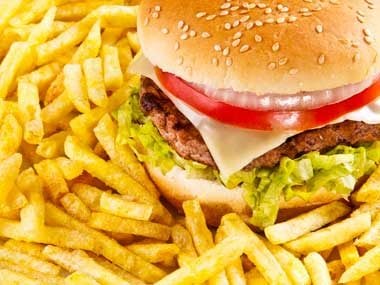
Healthier doesn’t mean healthy.
According to the National Restaurant Association’s 2013 Restaurant Industry Forecast, 75 percent of women and 66 percent of men say they’re trying to eat healthier at restaurants than they did two years ago. Keeping with the trend, more quick-service restaurants are rolling out so-called nutritious options as more consumers demand them. The chains are also reducing serving sizes, calories, and fat, and offering more whole grains and veggies.
Even so, we discovered many dishes marketed as healthier choices are still packed with more sugar, sodium, and calories than you might think. Take a look on the next slides. If you do decide to indulge, try to eat fresh, unprocessed whole foods the rest of the day to help offset your splurge.
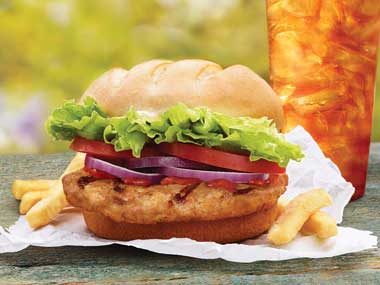
Burger King: Turkey Burger
In an effort to cater to health-conscious consumers, BK is rolling out a turkey burger for the first time in spring 2013. But while the 530-calorie burger is 100 calories less than the popular Whopper, it actually has a lot more sodium (1,210 milligrams compared to the Whopper’s 980).
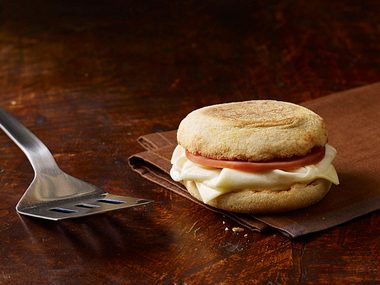
McDonald’s: Egg White Delight
Rolling out in spring of 2013, the yolkless version of the Egg McMuffin breakfast sandwich will have 250 calories, which is 50 less than the original. But the sandwich will be topped with Canadian bacon and white cheddar, which contribute to its whopping 800 milligrams of sodium (34 percent of the recommended daily maximum). The good news? This breakfast sammie boasts 18 grams of protein and 5 grams of fiber, a good filling combo. If you eat one, try to watch your sodium intake the rest of the day.
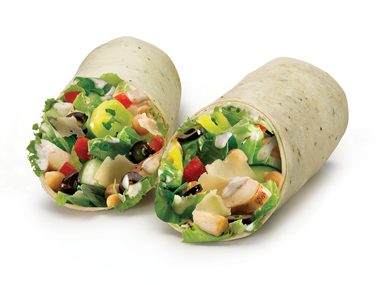
Quiznos: Mediterranean Chicken Wrap
This healthy-sounding wrap and 25 other items were added to the Quiznos menu in spring of 2012 as part of a brand overhaul to emphasize better flavor and ingredients. But the words “wrap” and “Mediterranean” are just marketing-speak to healthy up this sneaky dish, which with dressing contains 840 calories, 48 grams of fat, and 2,200 milligrams of sodium.
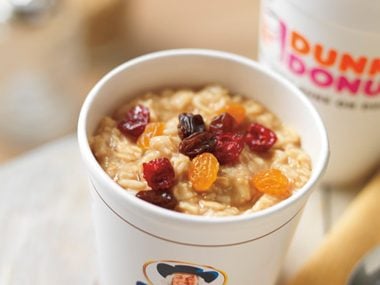
Dunkin Donuts: Oatmeal
Last fall Dunkin Donuts began offering a 300-calorie cup of Quaker Oats topped with dried fruit. (McDonald’s and Subway have also had oatmeal on the menu for the past few years.) Oatmeal—especially the steel-cut kind—is one of the healthiest items you can eat for breakfast, an excellent source of fiber and whole grains. But the plain DD version packs 22 grams of sugar! For comparison, the American Heart Association recommends consuming no more than 30 to 45 grams of added sugar a day. If you’re going to try it, avoid the sweet stuff in your other meals and snacks.
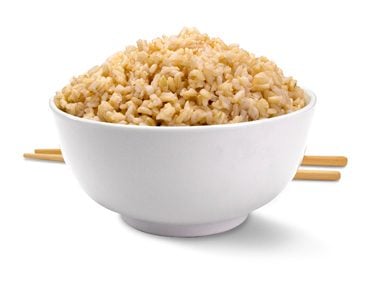
Panda Express: Brown Fried Rice
Brown rice is a dietitian’s best friend, and definitely has a healthy halo. It’s a good source of whole grains, has more fiber, and won’t jack up your blood sugar like its white cousin. So when the quick-service Asian chain Panda Express recently rolled out brown rice in its fried-rice dishes to its 1,500-plus locations, what could be bad? “If you add fiber to a candy bar, it’s still a candy bar,” Academy of Nutrition and Dietetics spokesperson Bethany Thayer, RD, told The Huffington Post, explaining that frying it defeats the health benefits. One serving still contains 19 grams of fat (30 percent of the recommended daily intake) and 830 milligrams of sodium (nearly 35 percent), making fried rice a sometimes treat, not an everyday choice.
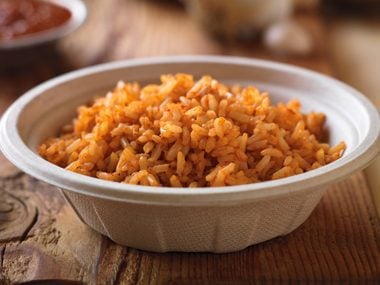
Qdoba: Brown Rice
Like Panda Express, this Mexican quick-service restaurant is now making brown rice available on its menu, and you can order it instead of the cilantro-lime version. But a chicken burrito with black beans and brown rice (and whole wheat tortilla, pico de gallo, lettuce, shredded cheese, sour cream, guac, and grilled veggies) is a huge calorie bomb: 1,190 of them, along with 48 grams of fat, 18.5 grams of saturated fat, and 2,330 milligrams of sodium. Nutrition-wise, the brown rice doesn’t do much at all. If you’re craving a burrito, consider splitting it with a friend.
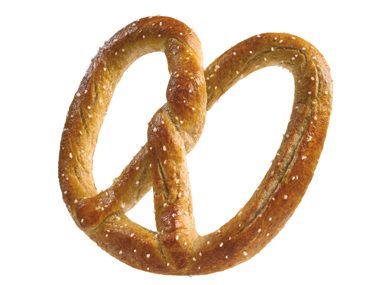
Auntie Anne’s: Honey Whole Grain Pretzel
With just 300 calories, 7 grams of fat, and 6 grams of fiber, this whole-grain option sounds like a healthier snack. But compare the nutrition facts to the original pretzel (340 calories, 5 grams of fat, and 2 grams of fiber), and it’s not that much better for you if at all. Plus, the whole grain version is also much higher in sodium: 1390 milligrams compared to 990.
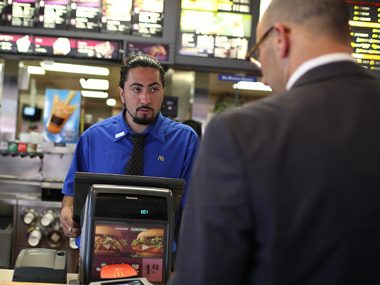
Trend: Healthy fast food gets you in the door. But then you order what you want anyway.
There’s a good chance you won’t even order these healthier items at all, according to this fascinating Huffington Post article, which says that healthy food items are basically just marketing tools to lure in customers. “But once customers are in the door, they often order unhealthy food no matter what,” writes Joe Satran. “Even those drawn by the promise of a diet-friendly meal often end up ordering the burger and fries.”
Continues trend forecaster Marian Berelowitz of JWT: “People might not actually have any interest in actually getting this item, but they’ll sort of appreciate it being there. Or maybe they’re thinking, ‘Well, next time I’ll get that.’ But then they never actually do.”